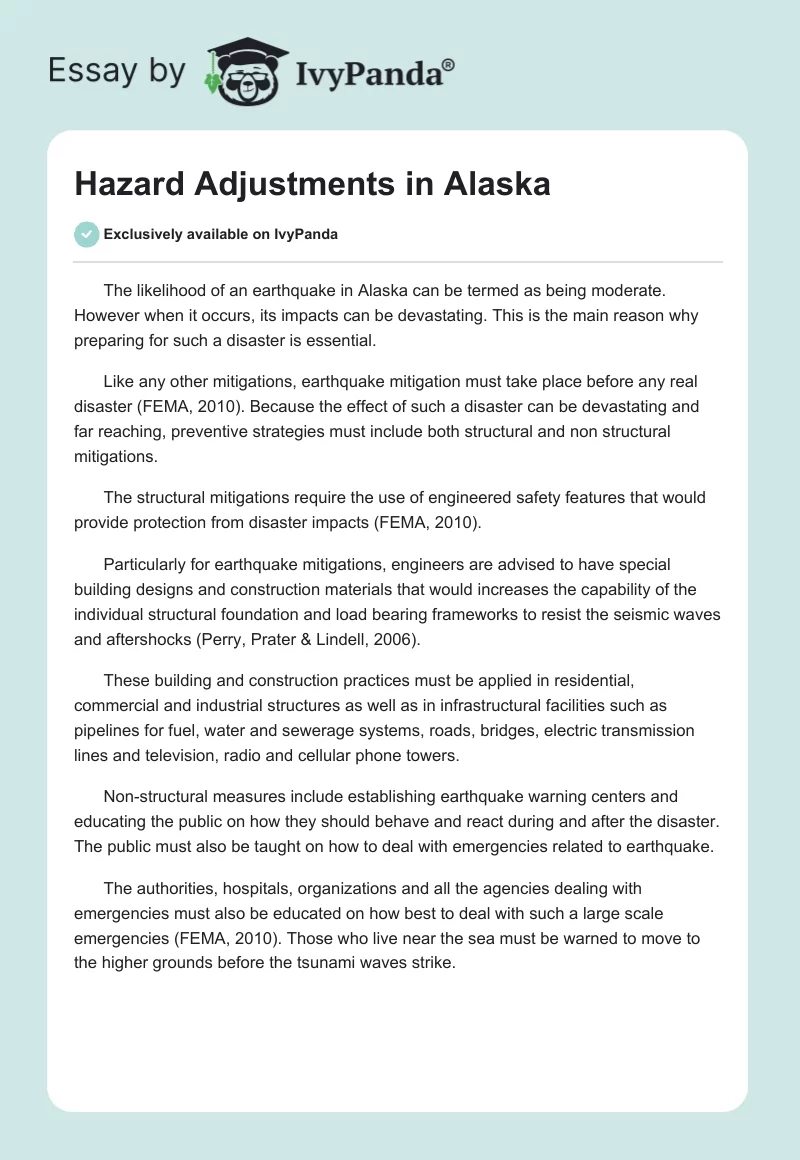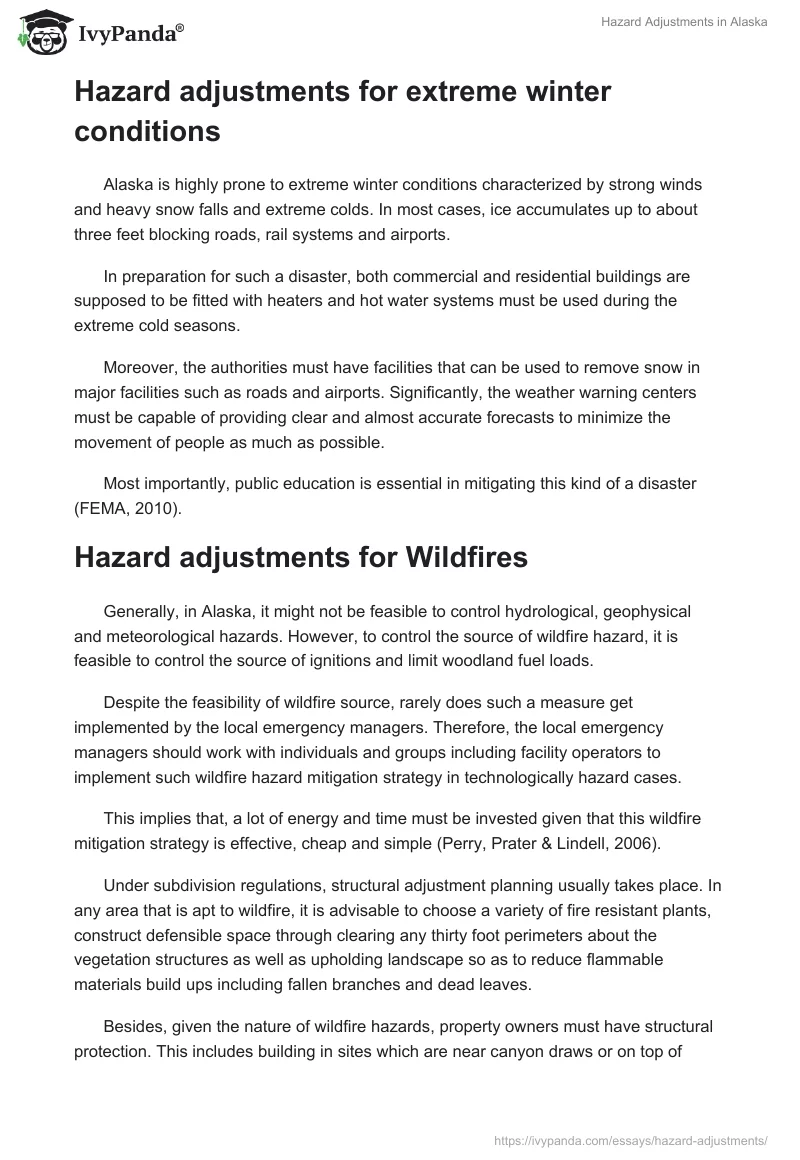The likelihood of an earthquake in Alaska can be termed as being moderate. However when it occurs, its impacts can be devastating. This is the main reason why preparing for such a disaster is essential.
Like any other mitigations, earthquake mitigation must take place before any real disaster (FEMA, 2010). Because the effect of such a disaster can be devastating and far reaching, preventive strategies must include both structural and non structural mitigations.
The structural mitigations require the use of engineered safety features that would provide protection from disaster impacts (FEMA, 2010).
Particularly for earthquake mitigations, engineers are advised to have special building designs and construction materials that would increases the capability of the individual structural foundation and load bearing frameworks to resist the seismic waves and aftershocks (Perry, Prater & Lindell, 2006).
These building and construction practices must be applied in residential, commercial and industrial structures as well as in infrastructural facilities such as pipelines for fuel, water and sewerage systems, roads, bridges, electric transmission lines and television, radio and cellular phone towers.
Non-structural measures include establishing earthquake warning centers and educating the public on how they should behave and react during and after the disaster. The public must also be taught on how to deal with emergencies related to earthquake.
The authorities, hospitals, organizations and all the agencies dealing with emergencies must also be educated on how best to deal with such a large scale emergencies (FEMA, 2010). Those who live near the sea must be warned to move to the higher grounds before the tsunami waves strike.
Hazard adjustments for extreme winter conditions
Alaska is highly prone to extreme winter conditions characterized by strong winds and heavy snow falls and extreme colds. In most cases, ice accumulates up to about three feet blocking roads, rail systems and airports.
In preparation for such a disaster, both commercial and residential buildings are supposed to be fitted with heaters and hot water systems must be used during the extreme cold seasons.
Moreover, the authorities must have facilities that can be used to remove snow in major facilities such as roads and airports. Significantly, the weather warning centers must be capable of providing clear and almost accurate forecasts to minimize the movement of people as much as possible.
Most importantly, public education is essential in mitigating this kind of a disaster (FEMA, 2010).
Hazard adjustments for Wildfires
Generally, in Alaska, it might not be feasible to control hydrological, geophysical and meteorological hazards. However, to control the source of wildfire hazard, it is feasible to control the source of ignitions and limit woodland fuel loads.
Despite the feasibility of wildfire source, rarely does such a measure get implemented by the local emergency managers. Therefore, the local emergency managers should work with individuals and groups including facility operators to implement such wildfire hazard mitigation strategy in technologically hazard cases.
This implies that, a lot of energy and time must be invested given that this wildfire mitigation strategy is effective, cheap and simple (Perry, Prater & Lindell, 2006).
Under subdivision regulations, structural adjustment planning usually takes place. In any area that is apt to wildfire, it is advisable to choose a variety of fire resistant plants, construct defensible space through clearing any thirty foot perimeters about the vegetation structures as well as upholding landscape so as to reduce flammable materials build ups including fallen branches and dead leaves.
Besides, given the nature of wildfire hazards, property owners must have structural protection. This includes building in sites which are near canyon draws or on top of slopes. Structural roof needs to be constructed using nonflammable materials and should have exterior walls (FEMA 2010).
The wood sidings should be replaced with masonry, concrete or metals. Finally, the roof wood composition shingles must be replaced with tiles or metals while wooden doors need to be installed with tempered glasses and replaced with metals.
References
FEMA (2010). Developing and maintaining emergency operations plans: Comprehensive preparedness guide (CPG) 101 version 2.0. Web.
Perry, R.W., Prater, C.S., & Lindell, M.K. (2006). Fundamentals of emergency management. Web.


